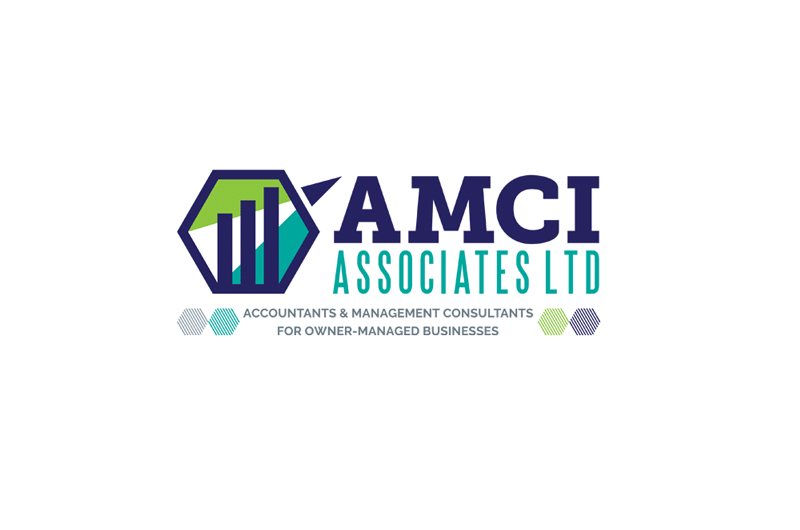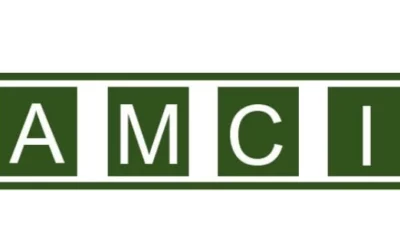Business
AMCI Associates, Birmingham Accountants Guide for 2021 Budget

AMCI specialises in supporting owner managed businesses and tax payers in the UK and beyond in terms of provision of high quality accountancy and business advisory services. ‘Adding value every step of the way’ is what we do for our clients that see us as a ‘one stop shop’ for all their financial needs.
We have a book available on Amazon and Kindle Titled: SUCCEED! Please order and benefit from it if you are planning to launch or develop your business further and realise your dreams post pandemic.
Here are the latest tax rates and allowances announced on 3rd March 2021 by the Chancellor – Rishi Sunak. This might be a good time to review your financial plans and we are here to support you.
| Budget 2021: tax rates and allowances | ||
| 2021/22 | 2020/21 | |
| £ | £ | |
| Income tax rates: England, Wales & Northern Ireland (non-dividend income) (note 1) | ||
| 0% starting rate for savings only | Up to 5,000 | Up to 5,000 |
| 20% basic rate tax | 12,571-50,270 | 12,501-50,000 |
| 40% higher rate tax | 50,271-150,000 | 50,001-150,000 |
| 45% additional rate tax | Above 150,000 | Above 150,000 |
| Note 1: Welsh income tax rates and thresholds are subject to parliamentary approval, however the Welsh Government has made a commitment not to raise Welsh Rates of Income Tax. Therefore, Welsh taxpayers will continue to pay the same rates as their English and Northern Irish counterparts. TheIncome tax bands will remain frozen until tax year 2025-26. | ||
| Scottish rates of income tax (non-dividend income) (note 2) | ||
| 19% starting rate | 12,571-14,667 | 12,501-14,585 |
| 20% basic rate tax | 14,668-25,296 | 14,586-25,158 |
| 21% intermediate rate tax | 25,297-43,662 | 25,159-43,430 |
| 41% higher rate tax | 43,663-150,000 | 43,431-150,000 |
| 46% top rate | Above150,000 | Above150,000 |
| Note 2: Scottish taxpayers pay the same tax as the rest of the UK on dividends and savings interest. Scottish income tax rates and thresholds are subject to parliamentary approval. | ||
| 2021/22 | 2020/21 | |
| Income tax rates (dividend income) | ||
| Dividend allowance | £2,000 | £2,000 |
| Dividend ordinary rate (for dividends within basic rate band) | 7.50% | 7.50% |
| Dividend upper rate (for dividends within higher rate band) | 32.50% | 32.50% |
| Dividend additional rate (for dividends above higher rate band) | 38.10% | 38.10% |
| Child benefit/guardian’s allowance rates (notes 3 & 4) | ||
| Higher rate (eldest or only child) (per week) | £21.15 | £21.05 |
| Other children | £14.00 | £13.95 |
| Guardian’s allowance per week | £18.00 | £17.90 |
| Note 3: An income tax charge will apply to taxpayers with ‘adjusted net income’ exceeding £50,000 in a tax year, when child benefit is also received by them or their partner. The charge will reduce the financial benefit of receiving child benefit for those with income between £50,000 and £60,000 and remove it completely for taxpayers with income above £60,000. Note 4: From January 2021,no child benefit payments are made in respect of children living overseas.This will apply to EEA migrants arriving in the UK under the new immigration system. | ||
| Personal allowances | £ | £ |
| Personal allowance (note 5) | 12,570 | 12,500 |
| Dividend allowance | 2,000 | 2,000 |
| Maximum married couple’s allowance for those born before 6 April 1935 (note 6) | 9,125 | 9,075 |
| Married couple’s allowance – minimum amount | 3,530 | 3,510 |
| Micro entrepreneur’s allowance: individuals making property or trading incomes below the level of the allowance will no longer need to declare or pay tax, while those whose income exceeds the allowance have the choice of simply deducting the allowance instead of calculating their exact expenses or calculating their profits in the normal manner | Allowance: 1,000 each | Allowance: 1,000 each |
| Income limit for personal allowance (note 7) | 100,000 | 100,000 |
| Income limit for married couple’s allowance: born before 6 April 1935 | 30,400 | 30,200 |
| Blind person’s allowance | 2,520 | 2,500 |
| Rent-a-room relief | 7,500 | 7,500 |
| Transferable/shareable tax allowance for married couples and civil partners (note 8) | 1,260 | 1,250 |
| 2021/22 | 2020/21 | |
| £ | £ | |
| Personal savings allowance for basic rate taxpayers | 1,000 | 1,000 |
| Personal savings allowance for higher rate taxpayers | 500 | 500 |
| Personal savings allowance for additional rate taxpayers | 0 | 0 |
| Note 5: From 2016/17 onwards, all individuals are entitled to the same personal allowance, regardless of the individual’s date of birth. This allowance is subject to the £100,000 income limit which applies regardless of the individual’s date of birth. | ||
| Note 6: This allowance is reduced by £1 for every £2 of income in excess of the income limit, but married couple’s allowance will not reduce below £3,530. | ||
| Note 7: Personal allowances are subject to the £100,000 income limit, which applies regardless of the individual’s date of birth. The individual’s personal allowance is reduced where their income is above this limit. The allowance is reduced by £1 for every £2 above the limit, down to zero. | ||
| Note 8: This allowance is available to married couples and civil partners who are not in receipt of married couple’s allowance. A spouse or civil partner who is not liable to income tax, or not liable at the higher or additional rates, can transfer this amount of their unused personal allowance to their spouse or civil partner. The recipient must not be liable to income tax at the higher or additional rates. If the couple marry or register a civil partnership, they will get the allowance on a pro-rata basis for the rest of that tax year. If one of them dies or there is a divorce or separation, the allowance continues until the end of the tax year. | ||
| National insurance | ||
| Lower earnings limit, primary class 1 (per week) | £120 | £120 |
| Upper earnings limit, primary class 1 (per week) | £967 | £962 |
| Apprentice upper secondary threshold (AUST) for under 21s/25s | £967 | £962 |
| Primary threshold (per week) | £184 | £183 |
| Secondary threshold (per week) | £170 | £169 |
| Employment allowance (per year/employer) (note 9) | £4,000 | £4,000 |
| Employee’s primary class 1 rate between primary threshold and upper earnings limit | 12% | 12% |
| Employee’s primary class 1 rate above upper earnings limit | 2% | 2% |
| Married woman’s reduced rate between primary threshold and upper earnings limit | 5.85% | 5.85% |
| Married woman’s rate above upper earnings limit | 2% | 2% |
| Employer’s secondary class 1 rate above secondary threshold | 13.80% | 13.80% |
| 2021/22 | 2020/21 | |
| Class 2 rate (per week where profits are above small profits threshold) | £3.05 | £3.05 |
| Class 2 small profits threshold (per year) | £6,515 | £6,475 |
| Special class 2 rate for share fishermen (per week) | £3.70 | £3.70 |
| Special class 2 rate for volunteer development workers | £6.00 | £6.00 |
| Class 3 voluntary rate (per week) | £15.40 | £15.30 |
| Class 4 lower profits limit | £9,568 | £9,500 |
| Class 4 upper profits limit | £50,270 | £50,000 |
| Class 4 rate between lower profits limit and upper profits limit | 9.00% | 9.00% |
| Class 4 rate above upper profits limit | 2.00% | 2.00% |
| Note 9: From April 2020, this will be limited to employers with an employer NIC bill below £100,000 in the previous tax year. Any deemed payments made to off-payroll workers do not count towards the £100,000 employers (secondary) class 1 NICs total. You cannot claim employment allowance for these workers. Employment allowance cannot be claimed for off-payroll workers. | ||
| Pensions | £ | £ |
| Annual allowance (note 10) | 40,000 | 40,000 |
| Lifetime allowance (note 11) | 1,073,100 | 1,073,100 |
| Money purchase annual allowance (note 12) | 4,000 | 4,000 |
Note 10:The annual allowance is a limit to the total amount of contributions that can be paid to a defined contribution pension scheme and the total amount of benefits that you can build up in a defined benefit pension scheme each year, for tax relief purposes. Since 6 April 2016, individuals with a high income have had a tapered annual allowance, where for every £2 of adjusted income over a threshold, an individual’s annual allowance is reduced by £1. From 6 April 2020, the Tapered Annual Allowance applies for individuals with ‘threshold income’ of over £200,000, and ‘adjusted income’ of over £240,000. The annual allowance will be £4,000 for individuals with total adjusted income (including pension accrual) over £312,000. From April 2021, the annual allowance for individuals with total income (including pension accrual) of over £312,000 will be £4,000. Note 11: The lifetime allowance will remain same at the current level of £1,073,100 until April 2026. Note 12: The annual allowance is currently capped at £40,000, although a lower limit of £4,000 may apply if you have already started drawing a pension. | ||
| 2021/22 | 2020/21 | |
| Reliefs and incentives | ||
| Enterprise Investment Scheme (EIS) – maximum (note 13) | £1,000,000 | £1,000,000 |
| Venture Capital Trust (VCT) – maximum | £200,000 | £200,000 |
| Enterprise Management Incentive Scheme (EMI) – employee limit up to the value of £250,000 in athree-year period | £250,000 | £250,000 |
| Seed Enterprise Investment Scheme (SEIS) – maximum (note 14) | £100,000 | £100,000 |
| Social Investment Tax Relief (SITR) – maximum | £1,000,000 | £1,000,000 |
| Income tax relief on EIS schemes | 30% | 30% |
| Income tax relief on VCT schemes | 30% | 30% |
| Income tax relief on SEIS schemes | 50% | 50% |
| Income tax relief on SITR schemes | 30% | 30% |
| Note 13: From 6 April 2018, the annual limit is doubled to £2m, provided that any amount over £1m is invested in one or more knowledge-intensive companies. Note 14: Capital gains tax reinvestment relief may also be available for investments made in 2018/19 on 50% of the amount invested. | ||
| Individual Savings Account (ISA): | £ | £ |
| ISA (NISA) annual limit | 20,000 | 20,000 |
| Junior ISA investment annual limit – under 18, living in the UK | 9,000 | 9,000 |
| Child Trust Fund annual limit | 9,000 | 9,000 |
| Lifetime ISA annual limit (note 15) | 4,000 | 4,000 |
| Note 15: To open a Lifetime ISA you must be 18 or over but under 40. Contributions can be made until age 50. The government will add a 25% bonus to the savings, up to a maximum of £1,000 per year. The lifetime ISA limit of £4,000 counts towards the annual ISA limit. | ||
| Capital gains tax | 2021/22 | 2020/21 |
| Rate | ||
| Basic rate tax payer | 10% | 10% |
| Higher rate tax payer | 20% | 20% |
| Gain on sale of residential property | ||
| Basic rate tax payer | 18% | 18% |
| Higher rate tax payer | 28% | 28% |
| 2021/22 | 2020/21 | |
| Annual exemption – individuals / trusts for disabled persons (note 16) | £12,300 | £12,300 |
| Annual exemption – other trusts | £6,150 | £6,150 |
| Business Assets Disposal Relief lifetime limit (note 17) | £1,000,000 | £1,000,000 |
| Investors’ Relief lifetime limit | £10,000,000 | £10,000,000 |
| Entrepreneurs’/Investors’rate | 10% | 10% |
| Chattels exemption | £6,000 | £6,000 |
| Note 16: Annual exemption of £12,300 is frozen until tax year 2025-26. Note 17: Business Assets Disposal Relief (formerly Entrepreneurs’ Relief) lifetime limit reduced from £10m to £1m for disposals made on or after 11 March 2020. | ||
| Inheritance tax | 2021/22 | 2020/21 |
| Single person’s nil-rate band | £1 – £325,000 | £1 – £325,000 |
| Single person’s 40% band | over £325,000 | over £325,000 |
| Residence nil-rate band (RNRB) – maximum (note 18) | £175,000 | £175,000 |
| Reduced rate (note 19) | 36% | 36% |
| IHT rate (for chargeable lifetime transfers) | 20% | 20% |
| Married couples or civil partnerships allowance nil-rate band | £650,000 | £650,000 |
| Gifts to charities | Exempt | Exempt |
| Small gifts to same person | £250 | £250 |
| General gifts – annual exemption | £3,000 | £3,000 |
| Wedding gifts to children | £5,000 | £5,000 |
| Wedding gifts to grandchildren | £2,500 | £2,500 |
| Wedding gifts to any other person | £1,000 | £1,000 |
| Note 18: The RNRB is available in respect of a main residence given away to children (including adopted, foster or stepchildren). Any unused nil-rate band transfers to the deceased’s spouse or civil partner, even where death predates the availability of the additional threshold. It applies in addition to the existing nil-rate band (NRB) or threshold (currently £325,000) if the individual and estate meet the qualifying conditions. Note 19: The estate can pay inheritance tax at a reduced rate of 36% on some assets if you leave 10% or more of the net value to charity in your will. | ||
| Business Property Relief | 2021/22 | 2020/21 |
| Business or interest in a business and transfersof unquoted shareholdings | 100% | 100% |
| Taxation of trusts | 2021/22 | 2020/21 |
| Accumulation or discretionary trusts: | ||
| Trust income up to £1,000 – dividend type income (note 20) | 7.50% | 7.50% |
| Trust income up to £1,000 – all other income | 20% | 20% |
| Trust income over £1,000 – dividend type income (note 20) | 38.10% | 38.10% |
| Trust income over £1,000 – all other income | 45% | 45% |
| Interest in possession trusts: | ||
| Dividend type income | 7.50% | 7.50% |
| All other income | 20% | 20% |
| Note 20: Trustees do not qualify for the dividend allowance. This means trustees pay tax on all dividends depending on the tax band they fall within. | ||
| Corporation tax | ||
| All profits and gains (excluding determination agreements and diverted profits) (note 21) | 19% | 19% |
| S.455 tax on loans made by close companies to participators | 32.50% | 32.50% |
| Note 21: Corporation tax rate will remain at 19% until March 2023. From April 2023, the main rate will increase to 25% for business profits made by the company over £250,000. A small profits rate (SPR) will also be introduced for companies with profits of £50,000 or less so that they will continue to pay Corporation Tax at 19%. Companies with profits between £50,000 and £250,000 will pay tax at the main rate reduced by a marginal relief providing a gradual increase in the effective Corporation Tax rate. | ||
| Capital allowances | ||
| Main writing-down allowance (reducing balance) | 18% | 18% |
| Special rate writing-down allowance (reducing balance) | 6% | 6% |
| Structures and buildings allowance (SBA) | 3% | 3% |
| Motor cars if CO2 > 50g/km but does not exceed 110g/km) | 6% | 18% |
| Motor cars if CO2 > 110g/km | 6% | 6% |
| FYA – New and unused motor cars if CO2 emissions are 50 g/km or less (or car is electric) (note 22) | 100% | 100% |
| Small pool write-off where WDV is £1,000 or less | 100% | 100% |
| First-year allowances for electric charge points (note 23) | 100% | 100% |
| Annual investment allowance (AIA) (note 24) | £1,000,000 | £1,000,000 |
| Annual investment allowance rate | 100% | 100% |
| Note 22: From April 2021, the thresholds for FYA will be reduced from 50g/km to 0g/km. Main rate of 18% capital allowance will be applicable for business cars with CO2 emissions not exceeding 50g/km. Business cars with CO2 emissions exceeding 50g/km will be eligible for writing-down allowanceat the special rate of 6%. Note 23: The allowance will be available until 31 March 2023 for incorporated businesses and 5 April 2023 for unincorporated businesses. Note 24: From 1 January 2019 the annual investment allowance is increased from £200,000 to £1m for investment made from 1 January 2019. This is temporarily extended until 31 December 2021. The threshold will revert back to £200,000 from 1 January 2022. | ||
| Research and development tax credit rates | 2021/22 | 2020/21 |
| SME rate | 230% | 230% |
| Research and development SME payable credit (note 25) | 14.5% | 14.5% |
| Research and development expenditure credit (RDEC) scheme | 13% | 13% |
| Film/High-end TV/ videogames tax credit | 25% | 25% |
| Open-ended investment companies and authorised unit trusts | 20% | 20% |
| Note 25: For accounting periods beginning on or after 1 April 2021, the amount of SME payable R&D tax credit that a business can receive in any one year will be capped at £20,000 plus three times the company’s total PAYE and NICs liability. | ||
| Patent box | ||
| Patent box | 10% | 10% |
| VAT | ||
| Standard rate(note 26) | 20% | 20% |
| Reduced rate | 5% | 5% |
| Zero rate | 0% | 0% |
| Flat rate of VAT on gross turnover (for limited cost trader) | 16.5% | 16.5% |
| Normal scheme registration threshold | £85,000 | £85,000 |
| Deregistration threshold | £83,000 | £83,000 |
| Cash and Annual accounting scheme – maximum to join | £1,350,000 | £1,350,000 |
| Cash and Annual accounting scheme – exit threshold | £1,600,000 | £1,600,000 |
| Flat-rate scheme – maximum allowed to join | £150,000 | £150,000 |
| Flat-rate scheme exit threshold | £230,000 | £230,000 |
| Note 26: Due to the Coronavirus pandemic, the hospitality, holiday accommodation and attractions industry can apply a reduced rate of 5% for certain supplies made between 15 July 2020 and 30 September 2021. Further the rates for these sectors will be 12.5% until 31 March 2022 before they are back to normal standard rate of VAT 20%. | ||
| 2021/22 | 2020/21 | |
| Annual tax on enveloped dwellings (ATED) | £ | £ |
| More than £0.5m but not more than £1m | 3,700 | 3,700 |
| More than £1m but not more than £2m | 7,500 | 7,500 |
| More than £2m but not more than £5m | 25,300 | 25,200 |
| More than £5m but not more than £10m | 59,100 | 58,850 |
| More than £10m but not more than £20m | 118,600 | 118,050 |
| More than £20m | 237,400 | 236,250 |
AMCI CONTACT INFO:
Tel: +44 121 327 8316
Email: [email protected]
Web: www.amci-associates.co.uk
LinkedIn: https://www.linkedin.com/in/ihqlak-hussain-a0459626
Main Office: 133 Tame Road, Birmingham, West Midlands, B6 7DG
Office Hours: Mon – Thur 09.00 – 19.30, Fri 09.00 – 13.00
| March 2021 ACCA LEGAL NOTICE |
| This is a basic guide prepared by ACCA UK‘s Technical Advisory Service for members and their clients. It should not be used as a definitive guide, since individual circumstances may vary. Specific advice should be obtained, where necessary. |
-

 Sports4 weeks ago
Sports4 weeks agoAl Ahly vs Inter Miami, 2025 FIFA Club World Cup – Preview, Prediction, Predicted Lineups and How to Watch
-
Health3 weeks ago
Back to Roots: Ayurveda Offers Natural Cure for Common Hair Woes
-

 Tech3 weeks ago
Tech3 weeks agoFrom Soil to Silicon: The Rise of Agriculture AI and Drone Innovations in 2025
-

 Startup4 weeks ago
Startup4 weeks agoHow Instagram Is Driving Global Social Media Marketing Trends
-

 Sports3 weeks ago
Sports3 weeks agoFIBA 3×3 World Cup 2025: Full Schedule, Preview, and How to Watch
-

 Science4 days ago
Science4 days agoJuly Full Moon 2025: Everything You Should Need to Know, When and Where to See Buck Moon
-

 Gadget3 weeks ago
Gadget3 weeks agoThings to Know about Samsung Galaxy S26: What’s New and What’s Next
-

 Sports4 weeks ago
Sports4 weeks agoWorld Judo Championships 2025: Full Schedule, Date, Time, Key Athletes and How to Watch















